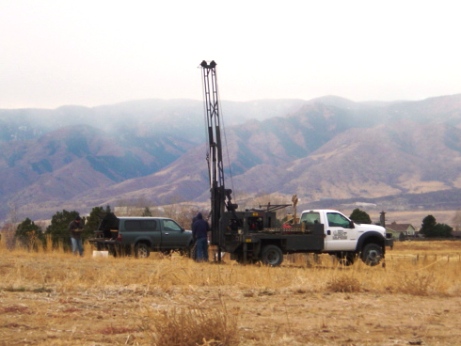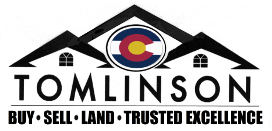Did you know that most of the Front Range of Colorado has a moderate to high potential for house/foundation-destroying swelling soils?
Updated JANUARY 2022
It’s not science fiction, it’s true. This swelling potential includes my entire service area of South Denver, Colorado Springs and Castle Rock. Most lots and therefore most homes have some potential of being impacted by swelling or heaving soils. While swelling soils are a legitimate area of concern, Colorado builders have become more adept at mitigating and managing the problem.
Learn much more about swelling soils by ordering Publication 43 from the Colorado Geological Survey. It has won national awards and is the consummate resource every new build home buyer must read. It is also distributed by all reputable Colorado builders at time of contract, so if you are building, you will be seeing it in the future.
This article is not intended as a research piece, and I am not a geo-soils engineer or a builder. I simply offer this information as written to the best of my knowledge in an attempt to encourage further research on your part and save preventable problems, if possible. The focus here is mainly to address the home buying and real estate aspects related to swelling soils and invite you to call me if you’d like to learn more about this fascinating topic. I gladly leave the scientific and legal aspects to qualified specialists in those respective fields.

What are swelling soils? Many areas of Colorado have a high percentage of a type of clay, otherwise known as bentonite, mixed into the surface soil. It generally occurs in “seams” running parallel or diagonal to the surface. This type of clay can expand when it becomes wet, resulting in swelling or upward heaving. It and similar soils can also shrink when moisture conditions in the soil change. In the case of a non-mitigated home site, the forces exerted in this process are easily capable of lifting a residential home by inches, or worse yet, only a part of that home. The shearing forces present in part of a structure being lifted while other parts of that structure remain stationary can be simply catastrophic. Years ago, many homes in Colorado were severely damaged due to this phenomenon. Damage can still happen in homes constructed today, though many experts say that things are better due to the modern methods mentioned below. That’s a small consolation however, to anyone dealing with this problem. ** (No scare tactic intended here, but on the other hand, if I were to blithely say that the problem is fully resolved now, I do not believe that would be a completely objective statement.)
Fortunately, all residential building in Colorado is now stringently regulated in this area of concern. Oversight has greatly improved the chances of a good outcome when building in Colorado. Soils engineers are involved very early in the process of building a home. They analyze drill test findings for several important reasons which include determining the correct process for under-foundation soil alteration and remediation. Then, if required, they design or specify the type of foundation best suited for the home to ensure correct performance over the decades. There are cases where almost no soils alterations are required, and a conventional foundation can be utilized. There are other cases in which poured caissons must be utilized in order to support the entire foundation system. It is not unheard of in these instances to be looking at a bill of over $100,000.
When suitable, a practice called an over-dig, or over-excavation might be considered. This process involves removing all of the soil down to a proscribed depth and then refilling the hole with a combination of materials that are properly suited to support a foundation. Often, this over-excavation process can be a cost-effective alternative to a caisson system and is done under the strict oversight of a regulated soils engineering firm. This approach can avoid a more expensive structural steel and wood basement floor, since a poured slab floor is used instead. It also avoids the cost of the caissons themselves, which are pricey.
For readers more curious about over-digs, and ballpark cost examples, please see below.
COLORADO Custom building and swelling soils
Due to the scope of work often required, swelling soils can greatly impact aspects of buying your new home. Nowhere would that apply more to the home buying process than building a custom home here. For example, the joy of buying a gorgeous lot with a spectacular view can quickly turn into a real-life nightmare when the soil test results come back reading something like: “high expansive potential in the building pad.” You picked that lot, and that precise home position in the pursuit of a dream. Now, your building costs will substantially escalate, or you will have to significantly alter your home plan or finishes in order to keep the total budget in line. Looking to the builder to pay this cost within a build quote is completely unrealistic. The reason is simple; there is no way for a builder to budget for an unknown item like soil mitigation, that varies so greatly from home site to home site.
Encountering soils with high swell potential or moisture issues is not an isolated or rare scenario in Colorado. However, there are approaches that can be used to ensure a person of having a pretty good idea of what those soil conditions are ahead of time. If you are planning to build a custom home, give me a call for more info on the wisest ways to proceed. And I’d strongly advise doing so before you buy the land.
Colorado production builders are often able to know a bit more about soils up-front. Here’s why.
In case you wondered why the new production home you bought a while back did not reflect a soils cost, when a Colorado production builder buys a lot or group of lots from a developer, part of what the builder might expect from that developer is an evaluation of soils and other conditions in a specific part of a neighborhood. This report is sometimes called an overlay and might show soils conditions from a larger view than just one lot. Builders may also confirm a subdivision’s soils independently when previous information does not exist or is outdated. Either way, before building, each individual lot is still tested and treated as above, but the costs can be better anticipated, because of the info from the overlay or independent tests. In cases where swelling soils are encountered, those costs are often averaged over an entire group of homes in order to create a per-home budget item. Soils remediation can then be priced in, just like lumber and plumbing.
SO, What’s a current homeowner to do? Some things, for sure, but probably not overwhelming
An often-neglected aspect of shifting soils in Colorado is that of ongoing care and oversight of any home in the Front Range. Care should be taken to ensure all water flows away from a home or structure. When landscaping, it is essential to ensure that the initial grade set by the builder is maintained. Installing grass or high-water use plantings right next to a foundation are bigtime no-no’s here. If you ever see water pooling on an area of your lot that has settled, it’s probably a good idea to call in a landscaper to evaluate and correct water flow. The idea behind all these practices is to attempt to keep the pad supporting your home in as stable of a moisture state as is possible. Not too wet, and not too dry, and certainly no dramatic changes brought on by something that was easily preventable.
Also, please remember that concrete flatwork making up driveways, patios and sidewalks do not receive the same expensive methods as the foundation during construction of your home. While care is generally employed in their installation, the cost of remediating soils under these surfaces before putting them in is prohibitive in the cost benefit-return universe. Another point here is that on any basement home, the dirt immediately beside or in contact with the foundation walls was replaced after removal – because it had to be excavated in order to provide access for construction of the foundation. This means simply that this “backfill” space could not be compacted back to original levels without damaging foundation walls. As time goes on, this material does naturally tend to settle. As a result, the graded slope running down and away from the structure can become level or even slope back in towards the foundation. The prudent homeowner really should keep an eye on this and other things. While all of this info is not new, and is contained in builder handouts, it is human nature to tell yourself you’ll read it later. Or if you bought a resale home, it is unlikely you would have heard all of this.
Again, please call me if you have any questions about these matters. If I don’t know an answer or it is outside of my expertise to discuss, I will put you in touch with a qualified professional who can. Much of this information was learned from working on-site for production builders for years. In addition, I’ve had the privilege of working with custom builders here, which has also been a huge learning opportunity.
Some current Details on Colorado over-EXCAVATIONS:
A geo-soils engineer reviews the findings of the soils report and if warranted, prescribes how much soil must be removed from under and lateral to the future foundation footings. The engineer may specify digging down and removing two feet, five feet, or even ten feet of native soil. This literally means digging a very large hole. The hole is then refilled with suitable structural fill dirt (in compacted layers or “lifts,” of around six inches each) up to the level of the future foundation footings. In Colorado Springs right now, it might be reasonable to anticipate a cost of between $9,000 and $12,000 per foot of depth of over-dig and refill. Therefore, two feet might cost between $18,000 to $24,000, for example. Transporting of materials represents the lion’s share of this cost. As a result, the distance to the source of fill material is a huge consideration. Hopefully, your building site is close to a local pit for materials, which would be similar to the lower per-foot number above. The more expensive per-foot version is a scenario in which trucks must go all the way across town to a retail material yard. Lastly, these costs relate more to custom building than production building, for reasons mentioned above.


